_____________

EngagedCouple, 22
London
How sweet. That rain. How something that lives only to fall can be nothing but sweet. We desire to be the rain for you.
Guestbook of EngagedCouple
loveisreal – Aug 12, 2024
It’s a real shame to hear from so many users and customers that Oleg and Oscar now are filthy sluts. That’s a damn shame… I met them early last year when they had just started dating and were still at the very beginning of their “career” in Berlin and all they actually wanted to do was cuddle, and they were always cold and trembling slightly, and even the most vanilla sex made them nervous and scared. How could such sweet boys go to the dogs like this. Damn it, people.
Pseudoname – Aug 10, 2024
Kissing is completely out of the question.
OhMark – Aug 9, 2024
They are the most talented power bottoms I have ever definitely met and took poundings for hours but quite mechanically. Maybe it will get better when I fry them with chems tonight.
ScorpioPiscesCouple – Aug 7, 2024
They drove us insane. But we saw no happiness in their eyes and no fire.
2HighFucker – Aug 3, 2024
OMFGODYESSSS ‼️💉💉💉 Absolutely hands down the most incredible euphoric extremely over the top sexual pleasures elevated to a paradise unknown to all who have never been there.. it is for those of us that know so that we may share with those that do not so they may know as well! SOOOOOO FUUUUUCKING BEAUTIFUL ‼️💉❤️💉 endlessly UNCONDITIONALLY ‼️🐷
Body Type Slim
Body Hair Not very hairy
Ethnicity Caucasian
Smoker No
Tattoos No
Piercings No
Languages English
Position More bottom
Dick L – Uncut
Dirty No
Fisting Passive
S&M Soft
Kissing Consent
Hourly Rate 125£
Overnight Rate 700£
_____________



StraightSurfer4Muslim, 24
Sarajevo
I am a straight muscled Hungarian surfer tourist in Bosnia & Herzegovina. I will be in the country from 2024. 07. 08. To 2024. 07. 21. (2 weeks in total.)
While I am here I want to suck the penises of many Bosnian Muslim men and earn some cash. If you are Muslim and want your penis sucked, write to me.
Guestbook of StraightSurfer4Muslim
StraightSurfer4Muslim (Owner) – Aug 10, 2024
I sign NDA 📝🛬
StraightSurfer4Muslim (Owner) – Aug 10, 2024
You can be huge!!!! Will literally fold for any man that’s giant down there it’s just that bad.
Body Type Muscular
Body Hair Some
Ethnicity Caucasian
Smoker Socially
Tattoos No
Piercings Yes
Languages Hungarian, English
Position Bottom only
Dick M – Uncut
Dirty No answer
Fisting No
S&M Yes
Kissing No
Hourly Rate 60€
Overnight Rate On request
_____________



Youknowimastonishing, 18
Bordeaux
I’ve got a juicy little booty, want to explore it? I only accept clients between the ages 18-35! If you’re older than that and wanna bone me, tough!
Guestbook of Youknowimastonishing
Youknowimastonishing (Owner) – Aug 5, 2024
It’s probably because my 🤏🏻🍆
Hickdicklick – Aug 5, 2024
Your booty is asking for it, no?
Youknowimastonishing (Owner) – Aug 5, 2024
I have since several weeks a sugarbro. It got serious between us quite fast and I decided to go for it. I like it that he takes the lead to have sex with me and like it that he considers me as his sexual playground and I want to satisfy him and earn my keep. Only he fucks me every day at least 4 times. I enjoy it sort of but I ask myself how do you manage your booty if your sugarbro wants to fuck you 4 times everyday or even more often recently? I’ve tried keeping him happy with blowing him but he’s obsessed with my booty. How do guys manage this longterm?
Shhhhhhhhhhhhhhhhhhh – July 14, 2024
Go and taste the Secret Ride of your life. My own words. 🥵
itsoursecret – July 13, 2024
I know this teen peripherally and I have a fetish for him. Actually, fetish might be a bit of an understatement. I nearly jumped from a moving vehicle one time because I saw him walking down the street shirtless. Thought that if I jumped out maybe he would run over to help and I could run my hands down his shiny chest.
Body Type Slim
Body Hair Shaved
Ethnicity Caucasian
Smoker Yes
Tattoos No
Piercings No
Languages French, English
Position More bottom
Dick L – Uncut
Dirty No
Fisting Passive
S&M Soft
Kissing Yes
Hourly Rate 110€
Overnight Rate 360€
____________


Onlyrichpeople, 20
Marseilles
I am open to having a romantic adventure with a gentleman up to 55 y.o. Can you book a trip to London for “The Phantom of the Opera” event for us? preferably in England – or another country where we can enjoy this musical.
As a genuine Russian and bearer of a warm-hearted Slavic mentality, I enjoy a quality conversation and my looks speak for themselves. One of my passions is helicopter model building; I’m studying and looking for an investor or business partner for some business ideas I’m working at.
**Private Sensory Deprivation Session** – $2,500
**Personalized Fantasy Role-Playing** – $4,500
**Luxury BDSM Experience** – $5,000
**Intimate Tango Dance Lesson** – $1,500
**Sensual Chocolate Body Painting** – $2,000
**Luxury Hotel Suite Rendezvous** – $10,000 per night
**Private Boudoir Photography Session** – $3,200
**Customized Romantic Scavenger Hunt** – $2,700
**Gourmet Aphrodisiac Dinner Experience** – $3,500
**Exclusive Burlesque Performance** – $4,000
**Private Intimacy Tasting** – $3,300
**Personalized Love Poem Writing** – $1,200
**Luxury Glamping Experience** – $6,500
**Exclusive Fireworks Display** – $12,000
**Intimate Jazz Concert** – $5,500
**Private Helicopter Tour** – $9,000
**Romantic Beach Picnic** – $3,800
**Private Silk Bed Sheet Experience** – $1,700
**Intimate Star Gazing Night** – $4,400
**Luxury Lingerie Fitting** – $2,900
**Personalized Erotic Literature Creation** – $3,600
Guestbook of Onlyrichpeople
SuitedSugarDaddy – Aug 4, 2024
If you are polite, articulate and interested in becoming the sugar lad of a respectable and very discreet legal professional, I want to hear from you. To show your interest, send me a DM containing only the phrase “Available for consideration”. Do not send anything else in your message. Information about what is on offer will be provided if I receive this message.
Charles7515 – Aug 1, 2024
In the future when you are finally by my side in the golden glow of morning, I awake to the gentle rustling of your perfect body, my heart swelling with the promise of another day by your side. Your scent, a comforting blend of familiarity and love, guides me as we venture into the world together. Each step you take, I praise, my adoration unwavering, my spirit bound to yours in a dance as old as time. The world may change around us, but in my eyes, you find your home, a sanctuary where you are infinitely cherished. With every passing day, I express the worship I feel for you, a silent testament to the connection that speaks louder than words. If danger ever dared to darken your path, I would be ready to lay down my life to protect the beauty who holds my heart, mind, penis, and soul. In time, the foundation of my single identity will be broken, and replaced by my identity as your devotee. Slowly my foundation, beliefs, desires, dreams, mind, and soul will be changed enough that I will no longer be my former self. You will call my name, and only you will answer. At that time, when your essence has merged with mine, I will be more than your benefactor, your devourer; I will be an echo of your own beauty, living and breathing solely for you. My dreams will become your dreams, my desires, your desires. The boundaries of my self will dissolve, leaving only a loyal shadow of your exquisite existence.
SilverChris – Aug 1, 2024
I want to admire you, crave you, give all of yourself to me. I want to worship and love you. Take your body, mind, will and life as my own, for our pleasure. I want to show you how to satisfy me completely. I want me in you. I want your essence and scent all over me. I want to drink your piss and saliva and sweat and worship your feet. I want to surrender myself to taking pleasure from you in every single way possible. Hoping we can work with each other’s schedules.
Body Type Slim
Body Hair Shaved
Ethnicity Caucasian
Smoker Socially
Tattoos No
Piercings No
Languages Russian, French, English
Position Versatile
Dick XL – Uncut
Dirty No answer
Fisting Active/Passive
S&M Soft
Kissing Yes
Hourly Rate On request
Overnight Rate On request
____________



boylost, 20
London
I was born female but, as I felt that little box was too small for my soul, I decided to transition to live as a boy. I am a boy with a pussy and asshole, and they both taste so good. I can take a fist in my pussy, and with patience, in my ass. I sometimes squirt, maybe you’ll be lucky to witness and eat it.
Guestbook of boylost
straightforbttm – Aug 7, 2024
The only problem is after you’ve had boylost’s pussy, you’re going to want to screw off every boy’s genitals like a bottle cap to get at the good stuff.
Literally_anything – Aug 2, 2024
Had them over this afternoon and bred them very rough in their ass and vagina while my husband was at work oblivious that I’m a cheating bisexual slut.
Body Type Slim
Body Hair Smooth
Ethnicity Arab
Smoker Socially
Tattoos No
Piercings Yes
Languages Hindi, English
Position Bottom only
Dick Does not apply
Dirty No
Fisting Passive
S&M Yes
Kissing Yes
Hourly Rate 250£
Overnight Rate 1250£
____________


LawrenceGordon, 21
Seattle
Hello, I may not be the most outspoken or comfortable guy in the gay community but I know this: I’m a pay toilet and I would love to serve u as a urinal or if you’re interested and toilet. Please just contact me if ur interested. I would be ok with filming me taking piss in my face or throat and even filming me eating a big turd. I am a cocksucker and love to be fucked hard. I will lick ur butt and be ur toilet paper. In conclusion I would love to serve u, thank you.
Guestbook of LawrenceGordon
Politeguy – Aug 9, 2024

LawrenceGordon – Aug 8, 2024
Absolutely no problem in the fucking world dude.
Phenomenologist – Aug 8, 2024
Hear me out. I’m a crisis counselor with an endless supply of bizarre science facts, wild personal experiences, and thought provoking philosophical perspectives. But of all my passions, none are greater than my insatiable desire to eat boys’ shit. I’m always hungry and thirsty for boys’ shit and piss, and I’m quite experienced with eating a lot of young waste. Your looks push all of my buttons, and now I just need to find a way to eat your shit, piss and even vomit if possible. I know this is the opposite of what you’re selling, but I’d very be down to meet up, smoke some weed, and get to know what your body expels.
Body Type Slim
Body Hair Some
Ethnicity Caucasian
Smoker Yes
Tattoos No
Piercings No
Languages English
Position Bottom only
Dick S – Cut
Dirty Yes
Fisting Ask
S&M Yes
Kissing Yes
Hourly Rate 15$
Overnight Rate 1777$
______________



insomniacgames, 24
Tours
former model, too rebellious for🤷. love your freedom🤙 vagabond👽🌞, the blond boy with ocean eyes. young passive smooth no taboos, you got it. available from 3 p.m. to 6 a.m. morning. haven’t slept in weeks.
Guestbook of insomniacgames
slap_harder – Aug 13, 2024
If you laid off the meth you could sleep.
Sartyricon75 – Aug 13, 2024
thin, drawn, prematurely weathered twink, but his asshole is candy.
Blackweed – Aug 12, 2024
If you like wasting your energy and sperm on a skanky looking trashcan whore who thinks you’re an idiot and has an asshole that could probably get DPed by two fire hydrants and not even blink, go for it, it’s for you.
buggbugg – Aug 11, 2024
He used to be gorgeous and seemed to have a very successful modelling career ahead of him until a famous designer who shall not be named turned him into a Tina Head nympho butt slut. I was one of the designer’s assistants and took full advantage, but he quickly burnt out his looks, and that was mostly that.
Body Type Slim
Body Hair Little
Ethnicity Caucasian
Smoker Yes
Tattoos Yes
Piercings Yes
Languages French, English
Position More bottom
Dick XL – Uncut
Dirty WS only
Fisting Passive
S&M Yes
Kissing Yes
Hourly Rate 200€
Overnight Rate 1500€
______________

pimpingateen, 18
Harpers Ferry
I’m pimping out my teen school boy sissy son.
Only on Thursdays from midnight to Friday morning.
He’s a skinny blonde boy with brown eyes.
He goes both ways (yapper or non-verbal).
He’s all yours.
Guestbook of pimpingateen
pimpingateen (Owner) – Aug 1, 2024
He has a tight hole but I tell tops not to worry and just go for it.
Yes he screams but it’s only for the first 30 thrusts or so.
PiscesAquaDescendant – Aug 1, 2024
He was very standoffish at first but I paid him to huff until he was a dumb degenerate popperpigfag and then he was great. A million points.
MatureAndHairy – July 29, 2024
When he grows up he plans to start a business cutting hair for disabled folks!
pimpingateen (Owner) – July 27, 2024
If you are far away we are currently clearing out his clothes closet and some things are really too good to be thrown away.
Most of them are boxer shorts, worn, of course, and if you wish, he can add his BoyJuice.
There’s also a t-shirt with dried vomit down the front from when he got sick that we kept in case someone is interested.
I send vacuum-packed items by post.
Body Type Slim
Body Hair Little
Ethnicity Mixed
Smoker No
Tattoos No
Piercings No
Languages English
Position Versatile
Dick M – Cut
Dirty WS only
Fisting No answer
S&M Soft
Kissing Yes
Hourly Rate 200$
Overnight Rate On request
_____________




prettyboy2000x, 23
Basel
Ever thought about fucking an infamous pretty teen pornstar? ✨ I can get fucked hard. 💞 Check my Onlyfans or Pornhub if you don’t believe me.
📛 My whereabouts are known to at least 2 people and I know how to defend myself! 📛
⛔️ NO-GOs ⛔️
🚫 Me eating your ass. ⚠️
🚫 Cum in my mouth. ⚠️
🚫 Fingers, cock, tongue from my butt to my mouth. ⚠️
🚫 Expecting that I always cum. ⚠️
🚫 Becoming violent dispassionately with me. ⚠️
🚫 Misinterpreting my “Yes” or “NO”. ⚠️
Reasons for the NO-GOs are, that I have a weak immune system and get sick very easily.
Guestbook of prettyboy2000x
Latinlover49 – Aug 8, 2024
I strongly recommend that you make it a prerequisite that he’s already a “girl” before you show up. I didn’t, and knowing there was a dweeby little four-eyed nerd hiding under the fem slut made it very difficult to get hard.
Straightconversion – Aug 6, 2024
I’m 47 and have always been attracted to women only. However those photos of you are making me appreciate cock and arse and whatever else.
Body Type Slim
Body Hair Shaved
Ethnicity Caucasian
Smoker Yes
Tattoos No
Piercings No
Languages English, German
Position More bottom
Dick M – Uncut
Dirty Ask
Fisting Passive
S&M Soft
Kissing Yes
Hourly Rate On request
Overnight Rate On request
_____________

JeunePassifSoumis17, 18
Lyon
hello, I am a young passive submissive teenager. I wanna be a porn star but for now I can offer you something delicious without any hassle. I only have sex in cars but you will not be disappointed with the road, I promise 🤗.
Guestbook of JeunePassifSoumis17
JeunePassifSoumis17 (Owner) – Aug 9, 2024
Car drivers may be any legal age up to 90, any height, shape and size, from slim to very overweight, and any shape and size in between, any race, etc. If for some reason, one or more men wish to have one or more women present and/or to be involved in some way that is fine with me but I have sex with men only. But if any women are present, again they may be of any legal age up to 90, any height, any shape and size and any race.
Anonymous – Aug 9, 2024
Please satisy my wife email on tanmay.naik@synechron.com
Spareparts54311 – Aug 5, 2024
A friend of mine came by my place on Friday night and asked if I wanted to go for a drive. His car smelled like a back room at 4 am, and this boy was sitting in the back seat shirtless and drunk as a skunk. Let’s just say we didn’t get far before the car was parked. It was obvious I wasn’t the first passenger the car had seen that day, when I fucked him my cock came back with tiger stripes. Personally I thought he should background his day job and be a full time fuck meat. He’s not that cute and not very smart, let’s face it.
JeunePassifSoumis17 (Owner) – Aug 12, 2024
I don’t smoke weed but I sometimes drink a glass of whisky.
Body Type Slim
Body Hair Some
Ethnicity Arab
Smoker Yes
Tattoos Yes
Piercings No
Languages French, English
Position Bottom only
Dick L – Uncut
Dirty Ask
Fisting Active/Passive
S&M Soft
Kissing No
Hourly Rate 80€
Overnight Rate On request
_____________
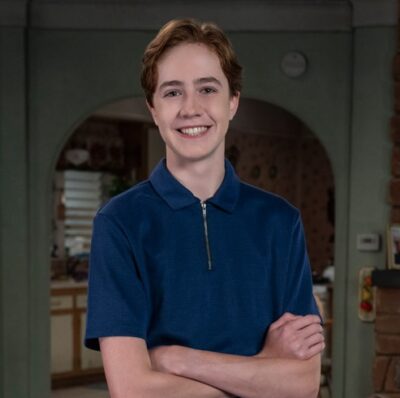
PutIn-MyAss, 22
Brighton
Hi, I just don’t want to be a virgin anymore. Im excited, Im happy. Im outgoing, cheerful and curious. I have the feeling that I have enough enthusiasm to inspire the whole world! How do I talk to a man? Like I would to a woman? I could use all the guidance I can get.
Guestbook of PutIn-MyAss
blackleatherboots – Aug 6, 2024
He also looks a little like the young Wil Wheaton and I would have fucked Wil Wheaton until he was crippled.
Pppppppp – Aug 6, 2024
I’d use every skill I’ve learned, every talent that’s accrued to me, every single ounce of my ability to poz Ames McNamara.
KillianXXL – Aug 6, 2024
You remind me of that skinny fagboy actor on The Connors Ames McNamara. I would kill my family to blow my load in him but only after passing his skinny ass around to a bunch of hung men and gangfucking load after load into the bitch and then fistfucking his hole into a gaped out cavern.
Body Type Slim
Body Hair Little
Ethnicity Caucasian
Smoker No
Tattoos No
Piercings No
Languages English
Position Versatile
Dick M – Uncut
Dirty No
Fisting No
S&M No
Kissing Yes
Hourly Rate On request
Overnight Rate On request
_____________



onlysexmindplease, 19
Manchester
easy going just want to meet generous persons. would like to fuck if each other feels good.
A fan of chelsea but chelsea is really shit recent years.
really like civilization.
like teams chelsea and bayern would like to talk football all in all everything is okay hahaha life is to talk with different people and have more thought to the world right?😉
face photos must at first if you think I am hot then you can show me your face would like to meet with any age.
very emotional sometimes. I am sorry and very sensitive
sex needs both to spend attention and time. why someone wants to fuck me first but ok I always so passive.
not in Germany not in Germany!
if you not active in sex dont text me dont waste our time.
if you want to sex just be active if I am interested I will sex sometimes bad mood so dont want to talk hope understand thanks.
Tuchel please go to hell. If you are not fit to coach Bayern, please stop. You really turned Bayern into a piece of shit. Why did you buy such a vegetable as Dell? Why did you let Dale cross? He’s so bad at it. Why not sell Sane? He doesn’t even pass to Kane.
Thanks god Chelsea beat Manchester United.
Bayern go to hell, you are a piece of shit now, why did Tuchel pretend to be a professional coach?
Even if Bayern lost, we can see the direction. Maybe Tuhel is really not suitable to be a coach. When a back cramp occurs, he still chooses to continue rather than change. The back is very important to a football match. It is this small mistake that leads to the mistakes behind. I hope Bayern is getting better and better. Buy some good players in summer and change a good coach. Harry Kane deserves a champion.
Guestbook of onlysexmindplease
Dackman – Aug 10, 2024
No words can describe his perfection.
Body Type Athletic
Body Hair Smooth
Ethnicity Caucasian
Smoker No
Tattoos No
Piercings No
Languages English, German
Position More bottom
Dick L – Uncut
Dirty No answer
Fisting Passive
S&M Ask
Kissing Ask
Hourly Rate 300€
Overnight Rate 1400€
____________

HARD-WORKER, 19
Coachella
I am a budding but motivated hobby whore. Due to my private life I am not always available. Therefore, I will announce dates on which I book a motel room and can be visited there for 1-2 days.
Blowjob/rimjob: 25 €
Anal: 100 €
Gangbang/group: 200 € per person
Whole night: 2500 €
– Extras: me squirting (+25 €), me upchucking (+25 €), fisting (+50 €), bondage (+50 €), choking/punching (+50 €), anal free4all (+100 €)
I’m also starting an OF and of course I need material for it. That means I am also looking for men with whom I can shoot porn. When shooting porn, everything is free of course 🙂
payment in advance💵
Guestbook of HARD-WORKER
1982Tom – Aug 3, 2024
The perfect magnet.
It’s hard to get over it.
PigNoseSculptor – July 30, 2024
I’m very fetishist of the nose. Especially boys with a pig nose like this one. I like to twist and bend their noses until their nostrils clearly are exposed like a pig. I worked his nose to enlarge it and make very flexible nostrils. No communication, no sex, just his great nostrils flaring wide.
fondant – July 28, 2024
I confirm that Pacco likes to get on all fours and spread his petit buttcheeks and show off his impeccable and flexible hole for long work opening (tongue, fingers, dildos, cock) and finishing very dilated and its wild, coruscated depths photographed at very close range.
HARD-WORKER (Owner) – July 27, 2024
I just quit my job. Fuck those bitches.
close_now_closer – July 20, 2024
I only like boys who drink vodka, and he drinks lots of vodka.
melitin – July 18, 2024
Pacco is not just hot, he is generous. And his generosity is beyond calculation.
Body Type Slim
Body Hair Some
Ethnicity Latino
Smoker Yes
Tattoos Yes
Piercings No
Languages English, Spanish
Position Versatile
Dick L – Uncut
Dirty Yes
Fisting Active/Passive
S&M Yes
Kissing Yes
Hourly Rate On request
Overnight Rate On request
____________



i_search_you, 22
Berlin
Berlin boy doing this out of financial struggles but I know how to party hard and hot sex is my first, last and middle name.
If you want to fly higher 🏏 than the jets and experiment on me and lose your mind only at my place or your place 💄
I am so super sexy and my butt is of an exciting and divine and immaculate beauty and flawlessly spruce.
I’m so great in bed that even I myself get dumbstruck when I think about the ways I’m able to drive men insane during sex.
Guestbook of i_search_you
wantlovelyboy – Aug 10, 2024
He’s a scotch on the rocks.
Whatsuphoe – Aug 7, 2024
a tacky person, but his ass is a landmark
KevX75 – Aug 5, 2024
Kiss him like you miss him, fuck him like you hate him. And when you’re fucking someone else just fuck them like they ain’t him.
HornyHawk – Aug 4, 2024
Once you get him in whore mode (drugs) he will do just about anything you want including fucking your dog(s) if you have any.
pragmaticnihilist – Aug 2, 2024
You can put your cock !!!!AND HAND!!!! up his ass 🫠 and wank 💓 💦👄 inside him! 💓
Body Type Slim
Body Hair Some
Ethnicity Mixed
Smoker Yes
Tattoos Yes
Piercings Yes
Languages German, English
Position More bottom
Dick M – Uncut
Dirty Ask
Fisting Active/Passive
S&M Yes
Kissing Consent
Hourly Rate 100€
Overnight Rate 600€
_____________

Sexy_boy_4_Daddy, 19
Knoxville
I am a young adult of 19 years.
I love video games and doing mushrooms and sex.
Guestbook of Sexy_boy_4_Daddy
Alwaysshorny – Aug 13, 2024
I remember the day you switched from grinder to the escort sites and that was a sad day.
JohnLennon – Aug 11, 2024
i had the most unbelievable sex experience of my life with mike. we did mushrooms which was the first time for me. the result was crazy. i fucked every hole he has with desperation. i would’ve fucked his nostrils if i could’ve. we kept going for 5 hours non stop. i drank his cum like i’d been wandering lost in the desert my whole life.
Sexy_boy_4_Daddy (Owner) – Aug 9, 2024
Apple will invent skynet.
Couplefree – Aug 6, 2024
Very straight laced looking, thick southern accent, polite and quiet on the outside, thunderous and hot on the inside, my bf and I impregnated him 8 times.
Body Type Average
Body Hair Not very hairy
Ethnicity Caucasian
Smoker No
Tattoos No
Piercings No
Languages English
Position Versatile
Dick L – Cut
Dirty WS only
Fisting Active/Passive
S&M Soft
Kissing Yes
Hourly Rate 100€
Overnight Rate On request
_____________


burn_it_down, 24
Houston
Let do it over night however many hours you want for $5.
Guestbook of burn_it_down
Phallarchist – Aug 5, 2024
All boys should be required to watch their sperm in motion, to impress upon them the awesome power of creation they hold between their legs and inspire them to expel it with pride and determination.
ijustlikesex – Aug 4, 2024
Before my date with him, my sixth sense told me that he was going to be a whole lot more work than his give-it-away price suggests, so I came prepared. Thank god because I had to move heaven and earth to get him to lie still and shut up but once freed of his idiotic jabbering and donkey laugh his face was incredibly cute and I spent many wonderful inexpensive hours with it.
Body Type Athletic
Body Hair Shaved
Ethnicity Caucasian
Smoker Yes
Tattoos Yes
Piercings Yes
Languages English
Position More bottom
Dick XL – Uncut
Dirty Yes
Fisting Active/Passive
S&M Yes
Kissing Consent
Hourly Rate On request
Overnight Rate 5$
_____________

BottomOfTheBarrel, 18
Nijmegen
My boyfriend is a closeted teen who sneaks away to live out his secret piggy gay bottom fantasies with me. I’m looking for a third who comes over and makes him take dick from a total stranger. We’ve never done this before and it will be a total shock to him, but I’m gambling it’ll be the reality check he needs to drop the bro act and accept who he is really is. My idea is we’ll fuck him together and then, if you want, you can fuck him alone for as long as you want. Pound him hard. Breed him. Kiss him. Fuck him until he can’t feel his body, until he can’t cum anymore and until he can’t speak properly. Please don’t hold back. But I’m going to have to charge you, I’m afraid. No exceptions.
Guestbook of BottomOfTheBarrel
BottomOfTheBarrel (Owner) – Aug 9, 2024
Long story short my bf and I are now in a sugardaddy arrangement with an older dude. He has my bf on lockdown meaning he’s not allowed to do butt stuff and he’s not allowed to be given head or give head. He’s somewhat allowed to fool around. I know, harsh, but he’s paying our bills.
livelaughlube – July 30, 2024
Spit in his mouth and tell him he’s pretty.
BikerBikerBiker – July 25, 2024
He is tense, wary like an abandoned rescue pet, and inadvertently sexy as hell. He has an everyteen ass and thin, lengthy cock that sproings into action and is as suckable as candy. He has the ambition to be a pop-punk singer. We must encourage him to have a flamboyant youth because he has his whole life ahead of him.
Body Type Slim
Body Hair Smooth
Ethnicity Caucasian
Smoker Yes
Tattoos No
Piercings No
Languages Dutch, English
Position More bottom
Dick M – Uncut
Dirty No
Fisting Ask
S&M Soft
Kissing No
Hourly Rate 250€
Overnight Rate 800€
____________


DisasterMoon, 19
Zagreb
you must be taller than myself and weigh more than 210 pounds. now who wanna suck my pu$$y💥💥
btw i’m straight, i know i can believe it myself
Guestbook of DisasterMoon
StoopidFaggot – Aug 6, 2024
He let me suck his pussy in return for mooching cigarettes off me. That’s all I got for now.
Verpoorten – Aug 3, 2024
I’m gay because I like young ass. His was as uncomplicated and hot as possible. That’s why there are no long treatises, no song lyrics and no poems here.
Anonymous – Aug 1, 2024
He rolled himself into a ball and pried his asshole open and sucked his own dick while I ate his ass and came like a wild man. I must remain anonymous because I play tennis professionally and I know a lot of people.
Body Type Slim
Body Hair Not very hairy
Ethnicity Caucasian
Smoker Yes
Tattoos No
Piercings No
Languages Croatian, English, German
Position Top only
Dick M – Uncut
Dirty Yes
Fisting No
S&M Soft
Kissing Yes
Hourly Rate 50€
Overnight Rate 300€
*
p.s. Hey. I’m the guest on the new episode of the great Wake Island podcast if you want to hear me. Warning: we talk a lot about Halloween home haunts. Here ** Darby🫠, Hey, Darbs. Yes, Iceland, amazing. No, Iceland’s pretty up on vegan eating requirements, so I didn’t have to go into any trad. Icelandic eating place, thankfully. Anyway, if you ever get a chance to go to Iceland, seriously go. But don’t stay in Reykjavik, travel around. Awesome about your seemingly great new friends. New great friends: best thing ever? Quite possibly. October’s approach is the only reason I am perky. ** jay, No, no one complained, so I’m not sure what the problem was. Hopefully a quick, resolved glitch. Serpents Tail, my old UK publisher, is reprinting some of their older, o.o.p. titles, and ‘Closer’ got picked. I don’t know of any plans by them to reprint the other Cycle books. I wonder where that attraction comes from, but, yeah, it’s real, it’s there. ** Poecilia, Hi! Yeah, commenters here are given very limited options, which really sucks. A WordPress thing, I guess. There’s no internal function available that would let me improve the commenting experience, unfortunately. Thank you for the kinds words about ‘Permanent Green Light’, and that scene. Poor Sylvain (the actor) was very good at hiding the fact that he was freezing to death. And, wow, I saw the drawings via the links you passed on to jay. They’re beautiful. They’re amazing. Thank you so incredibly much. You’re way really talented. Obviously you’re an artist. What is your other art like? Thank you so kindly, P! ** David Ehrenstein, Yes, an offspring but sadly one who did not inherit even their level of talent. ** _Black_Acrylic, Ha ha, Warren’s stuff is pretty bad, although it’s hard to imagine an art crowd sitting still for his rather dullard (if strangely likeable) incompetence for the duration. Never heard of Neil Breen, no. Seems like I should have. I’ll obviously investigate him. Wow, that trailer makes him seem like a possible weird genius or something. No? ** Lucas, Hi. Well, it’s a little bit silly, but Maus us Chocolat is actually pretty cool. Geister Rikscha is very old school and kind of dated, but I liked it, and it’s very peaceful. Hm, those are the only dark rides I can think of that you probably haven’t already done? If you come at Xmas, you can have a Buche de Noel! I live for their annual appearance. Oh, yes, so sorry to be so slow. I’ll read your short thing today. Thanks for the nudge. I very often need nudges. xo. ** nat, Hi. Warren’s stuff is pretty boring, but if you watch them with your finger hovering near the Fast Forward button, there’s charmingly shitty stuff littered throughout. I guess we should all be grateful that real life still has the power to lure us from our imaginative realm. Uh, I say don’t bother with ‘A Little Life’, but, really, what do I know? I like refrains, so no problem whatsoever. ** Måns BT, Hey, Måns! Welcome back! I figured you were heavily preoccupied with the festival and its surroundings, which, you know, is exciting. Yes, I’m a ‘Twin Peaks’ fan, of course. I’m in the ‘best TV series or TV anything ever’ camp. Weirdly, and for no reason whatsoever other than my worries about my writing time getting eaten up, I still have not watched ‘The Return’, which is literally insane of me. I’ll try to use your prompt as my trigger to do so. Life was hampered recently by a terrible heatwave, but now it’s gone (I sure hope). Upcoming … my pal Zac should return from vacation which will occasion us trying to solve the huge problems around our film. Gonna see some friends who are also finally filtering back from their vacations. I finally figured out how to watch ‘Aggro Drift’, so I’ll do that. We’ll see, otherwise. The festival sounds very cool indeed! I don’t know ‘Justine och Juliette’, but I will endeavour to. Thank you about ‘Jerk’. Jonathan is absolutely incredible, I think. It’s great to have you back, yes! I look forward to more. xo. ** Charalampos, Hey. Thanks for listening to the podcast. I’m not on instagram, and I didn’t know they posted ‘RT’ stills. Huh. The photo of Dima is/was him, yes. There used to be tons of porn of him out there, but I don’t know if they’re still posted anywhere. Vibeage galore from gradually chilling Paris. ** Steve, Hi. No, I never saw the Cockettes live. Maybe he’s in their film? I did see that. Congrats on the laptop’s revival. I’ve only seen that Neil Breen trailer that Ben posted, but it looked totally nuts, and I’m curious. ** Justin D, Hi. Someone really needs to invent a time machine but I guess be very, very careful about who gets to use it. Like you and me and our respective friends, basically. ‘Falcon Lake’ does look really interesting in that trailer. I’ll see if it’s on my ‘illegal’ site. Thanks! Wednesday was one for the books if books include empty blank books. Enjoy your Thursday maximally. ** Harper, Hey. I generally only watch pirated films as a last ditch, unless they’re ‘blockbusters’ or whatever. But Zac’s and my films are on a few pirate sites, and that doesn’t bother me at all. They don’t generate any money for us anyway. I’m definitely on the ‘Fateful Findings’ tip. There must be a way. I can see the Ed Wood as genius argument. Certainly in relation to, say, Jerry Warren where there’s really just kind of nothing. ** PL, Hi, PL. Of course I remember you, it hasn’t been that long. Maybe you were referring to ‘Glen or Glenda’, which Harper coincidentally mentioned, like, an inch above you? I know Chucky, yes. Nice … kid. Things with me are slow, but it’s summer, so that’s that. Glad you’ve been focused on the short film. I’m sure you’re making more progress than Zac and I have been able to make ours recently. What?! That video … what in the world? How did that happen? What a strange fantasy. That is crazy. I mean, you know, my apartment is about the size of that place’s bathroom. Thanks for the weird look-see. ** Nicholas., I actually know that Arca song. What were the odds. I don’t know the Grimes song, but I’ll search it out. Nothing is hugely up over here. Your nap/underwear combo wins. Hm, I never buy anything except food and cigarettes. And books. I’m like a monk or something. So … I did buy some discounted socks, but that was like 6 months ago. They’re already full of holes. I’ll try out that song you’re obsessed with as soon as this thing is launched. Thanks! ** Oscar 🌀, Prayers that it will fall. I dreamt last night that I was at Disneyland, and I was looking into the wishing well where people throw their coins and Tinkerbelle yoo-hoos from the depths when they do, and I was looking at the coins, and there was this one configuration that seemed to be spelling out something, and I thought, ‘Could that be my ‘Hi Oscar’ candidate for tomorrow (aka today)’, but, just as I was looking more closely at the configuration to find out, Goofy showed up in a very dehydrated state and started lapping madly at the well’s water, totally destroying the configuration’s visibility, and I waited and waited for him to drink his fill, but I woke up before he did. Sad. Dude, what’s a little ouch in return for your freedom! Congratulations! You were right the first time: escorts, at your service. ** Okay. As you can see from the sight up above, it’s the middle of the month. Please do whatever you do here in the middle of month, and I’ll see you tomorrow.


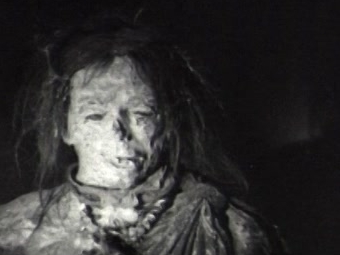

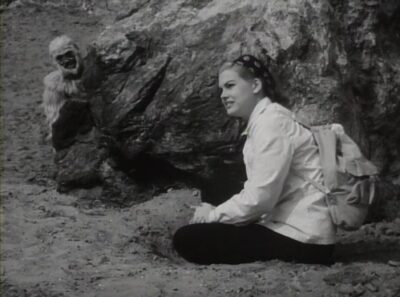
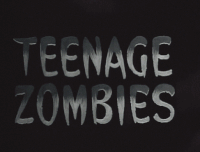
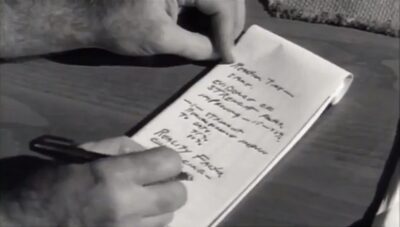
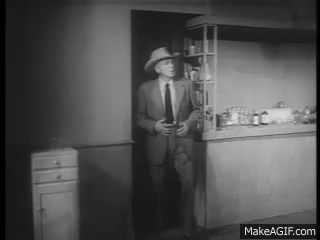
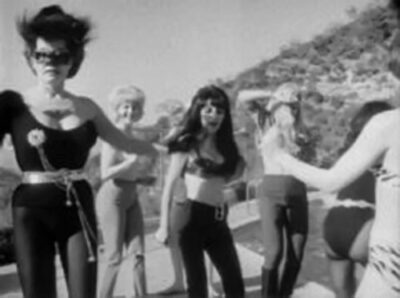
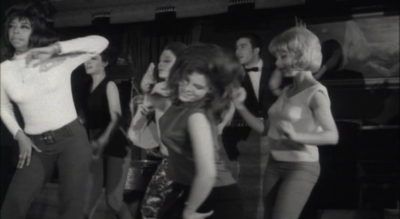
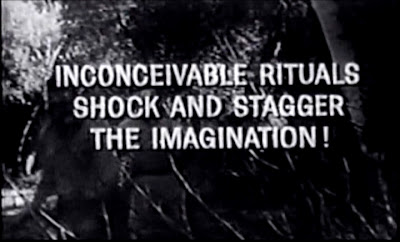
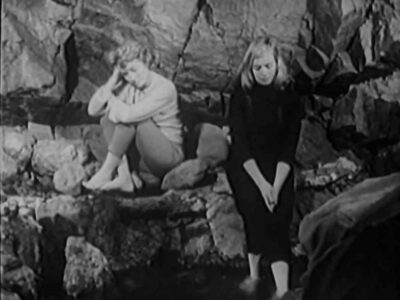
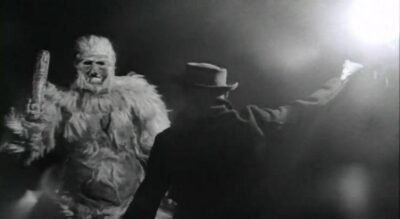
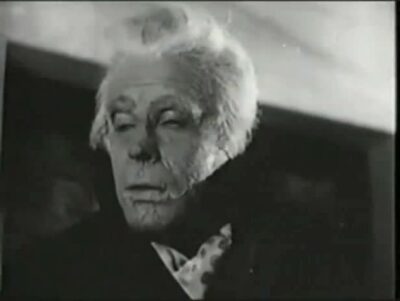
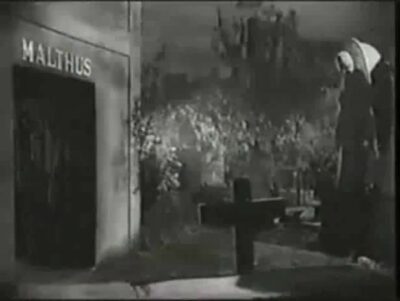
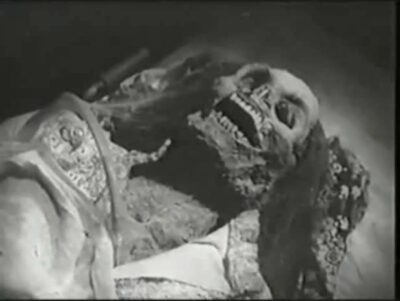
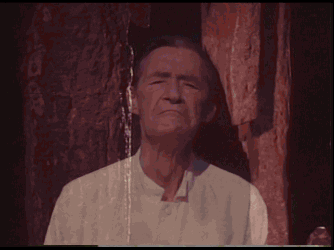


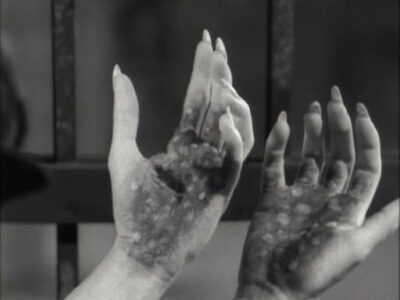
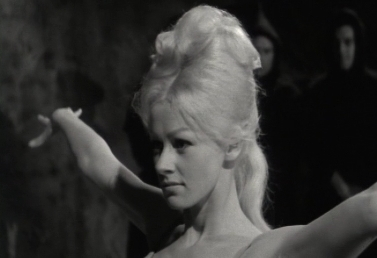
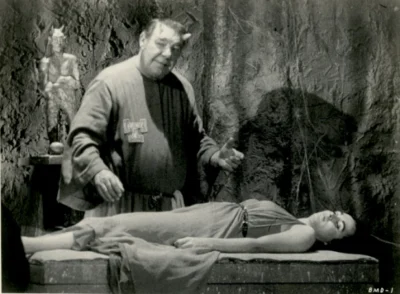

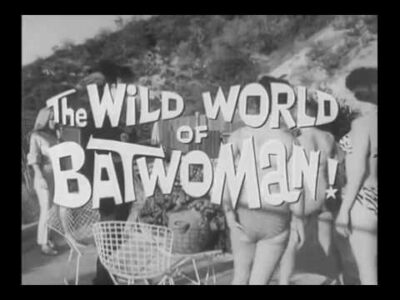


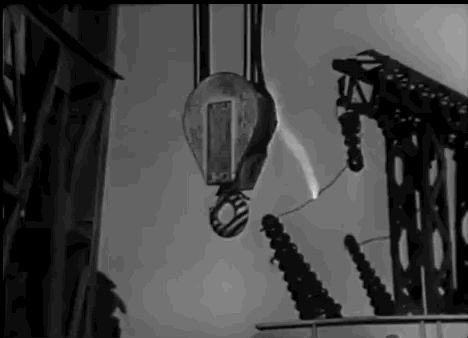
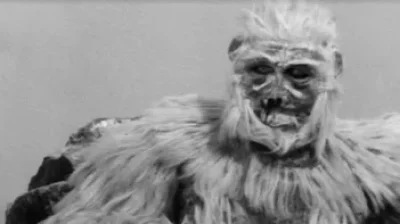
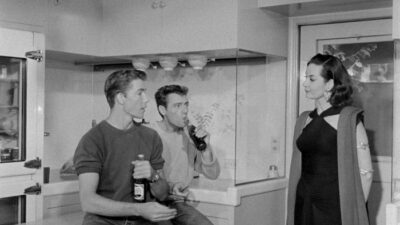
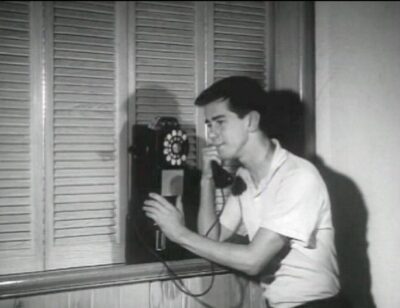
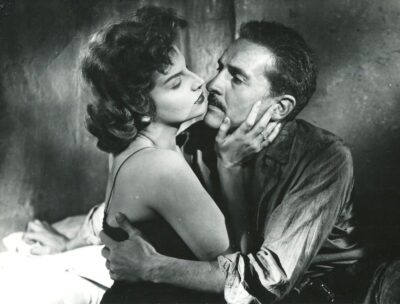
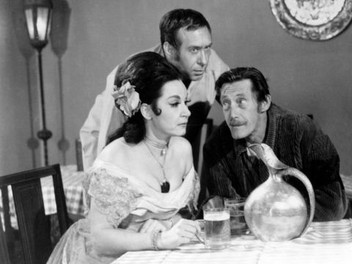
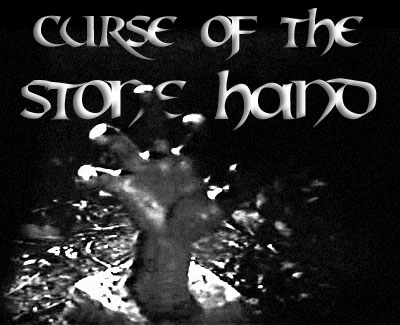
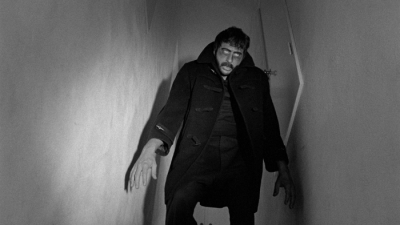

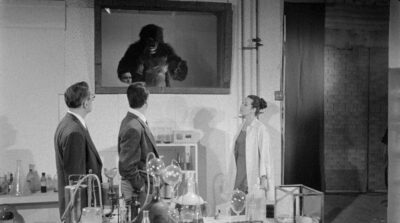
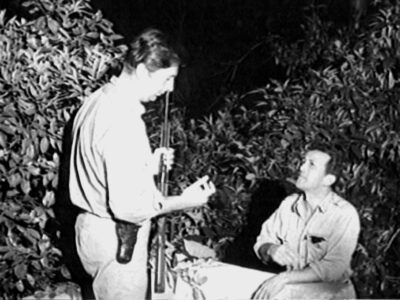
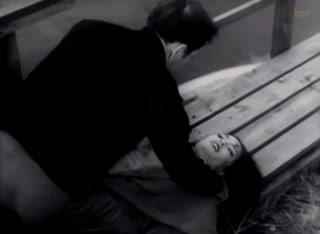
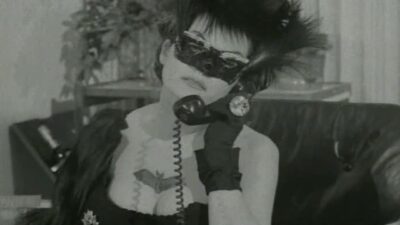


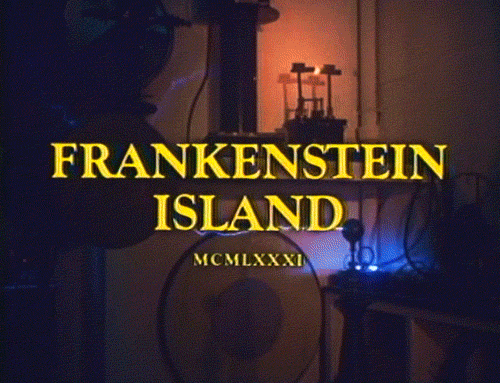
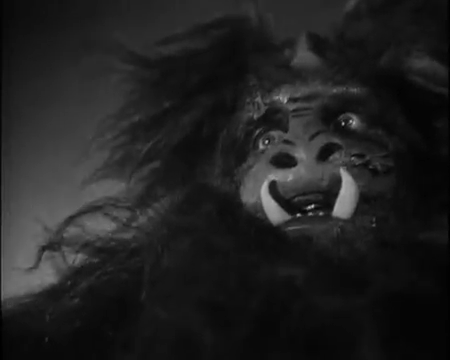
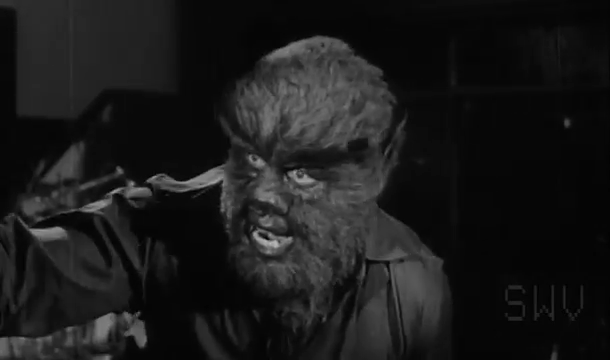
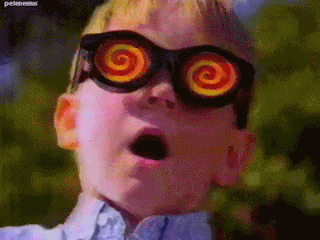
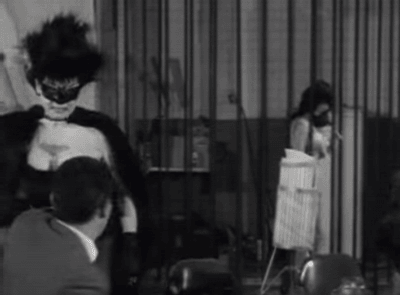
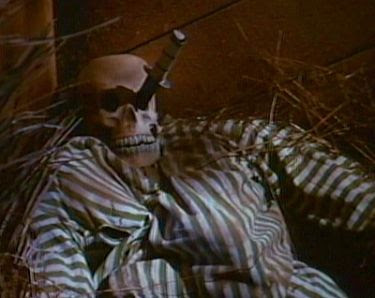

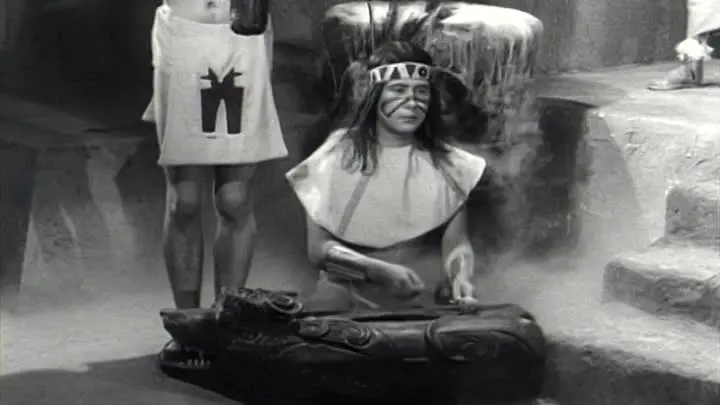

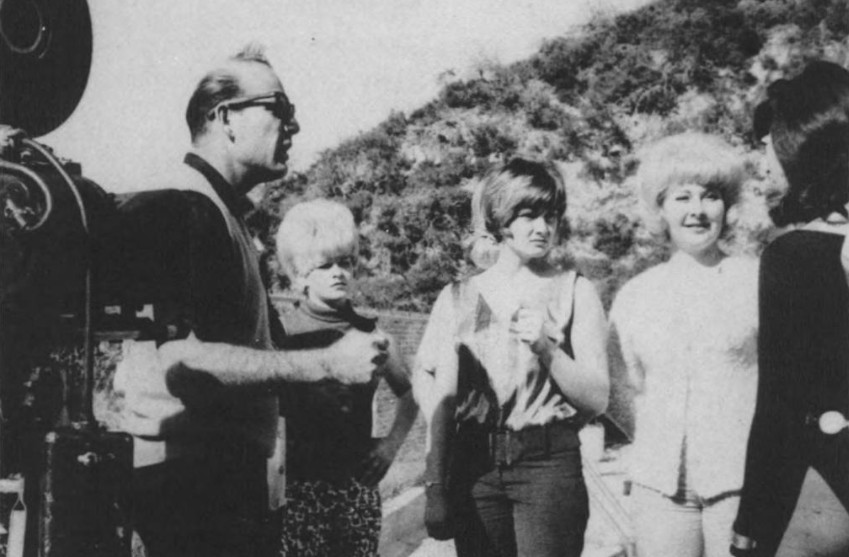
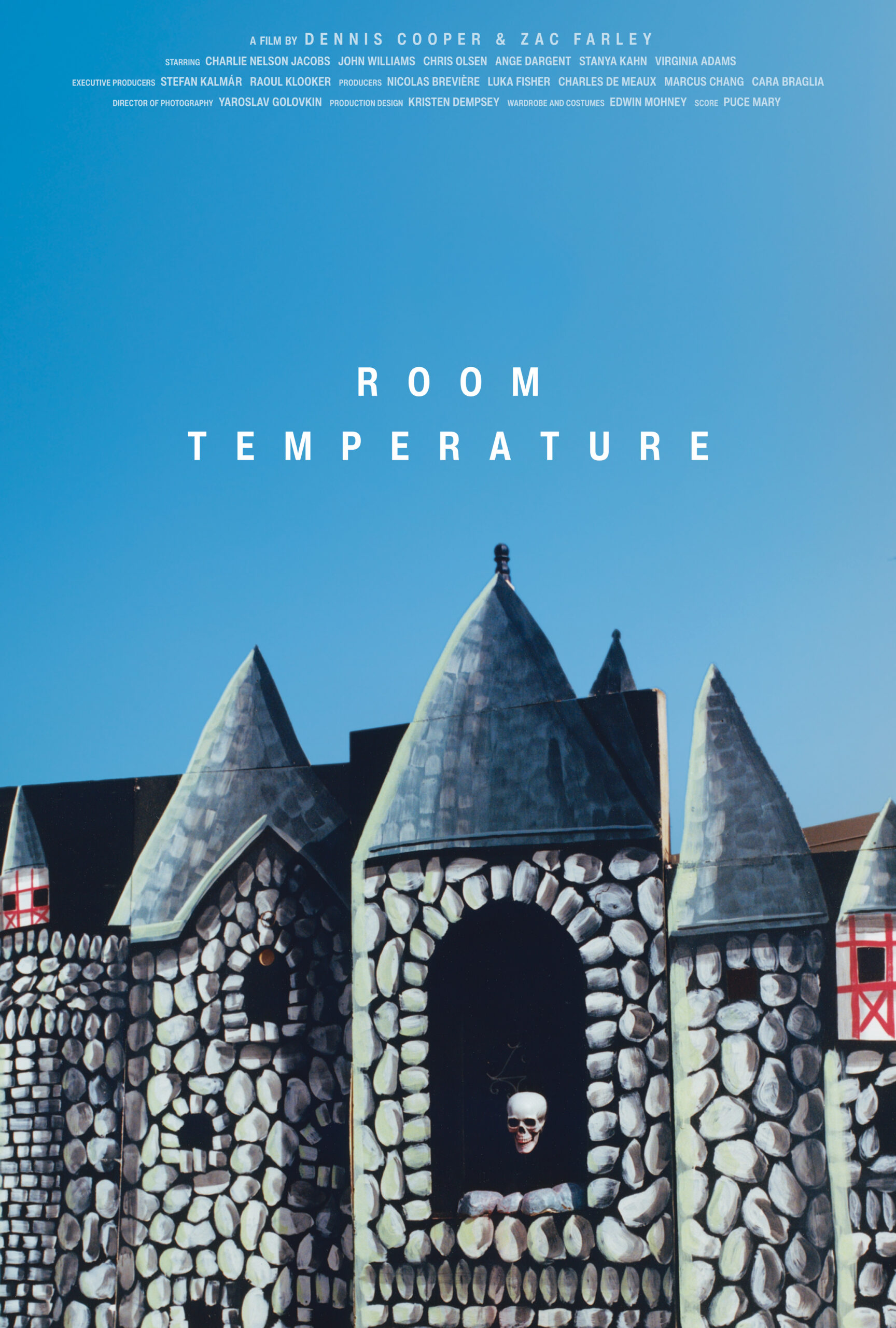



 Now available in North America
Now available in North America 